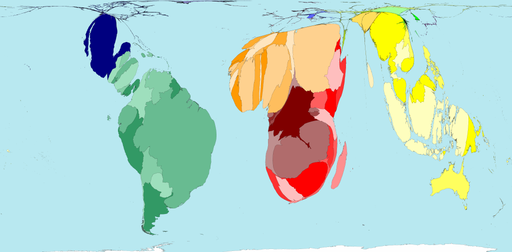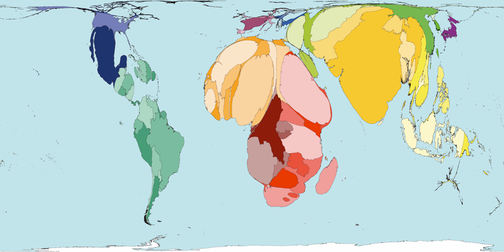Globalisation
The module explains global interdependencies, its controversial aspects and how it affects our daily lives
World maps
Have you ever thought about how the world’s population or income is distributed on earth? Which countries increasingly contribute high amounts of greenhouse gases to climate change or where the resources for our consumption come from?
Below you will see various world maps, on which the surface areas of the individual countries have been adjusted proportionally to the extent of a particular topic. What could the topic be? Assign the world maps to the matching names from the list underneath.






The maps have mostly been created several years ago. The numbers that were necessary for their production, however, have changed only slightly in recent years and tend towards the relationship shown or have become further exacerbated in recent years.
Sources
http://www.imf.org/external/pubs/ft/weo/2012/02/index.htm
http://www.worldmapper.org/display.php?selected=169
http://www.weltbevoelkerung.de/datenreport
http://www.worldmapper.org/display.php?selected=2
http://www.cerina.org/co2-2008
http://www.worldmapper.org/display.php?selected=119
http://www.worldmapper.org/display.php?selected=108
http://www.fao.org/docrep/016/i3027e/i3027e.pdf
http://www.worldmapper.org/display_extra.php?selected=411
http://www.worldmapper.org/display.php?selected=119
